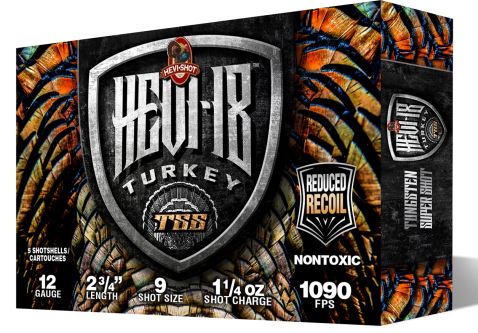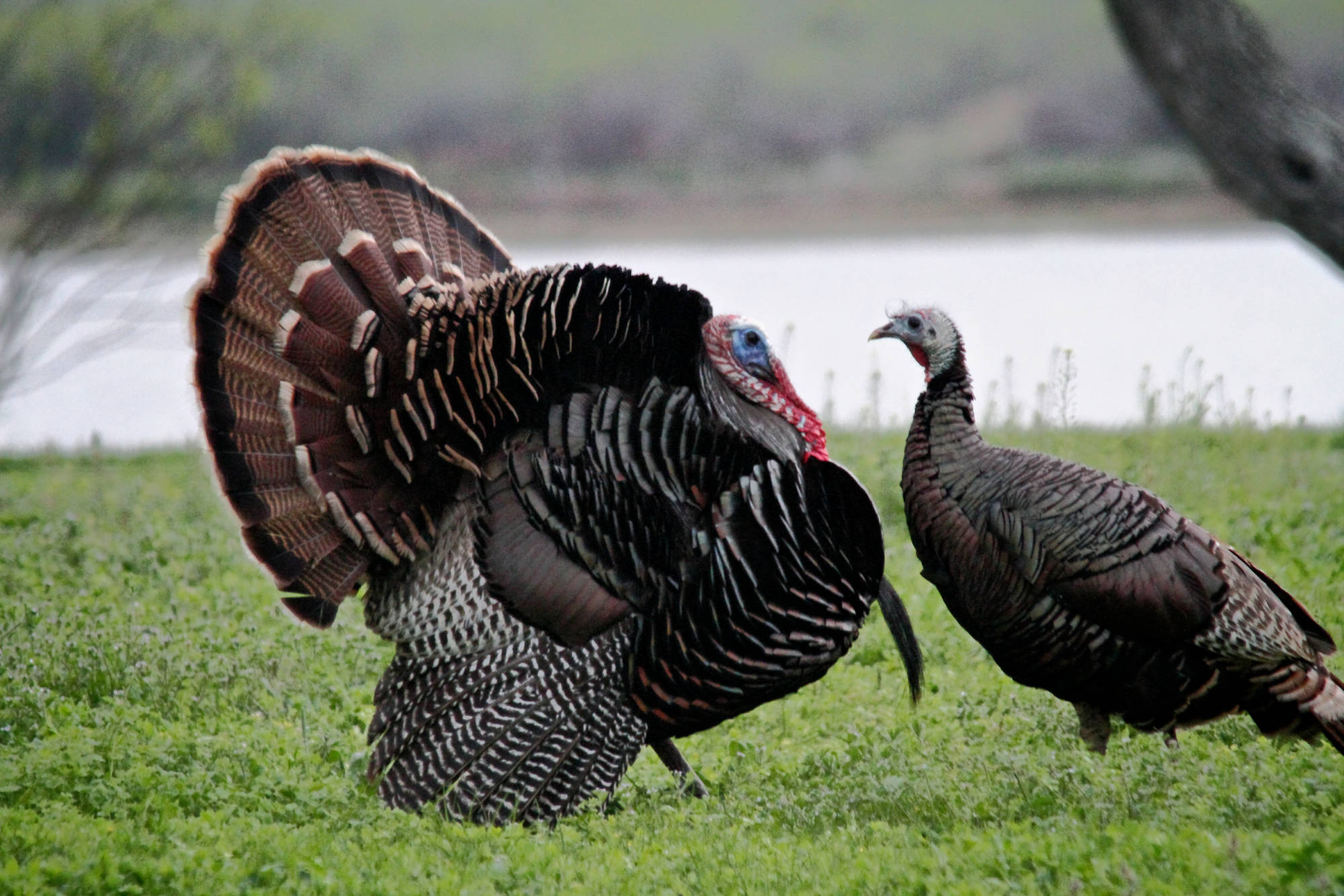
By Jim Dickson | Contributing Writer
The North American wild turkey is our biggest game bird and one that has successfully been domesticated to become a major food source.
Nothing compares with the thrill of hunting down a wild turkey and bringing it to bag. Turkeys have a reputation as stupid among those who have never hunted them. Nothing could be further from the truth as any veteran turkey hunter will tell you. Their sight and hearing is matched only by their alertness and the more you learn of their cognitive power the more you respect it.
There are two species of wild turkey, the ocellated turkey, agrocharis ocellata, of Mexico and Central America, and the North American melagris gallopavo. The latter is divided into five sub-species: Eastern, Florida, Rio Grande, Merriam, and the Mexican turkey. Of these the Eastern turkey is the largest and most common. Some dedicated turkey hunters collect trophy birds from all five sub-species. That entails a lot of expensive travel and time.
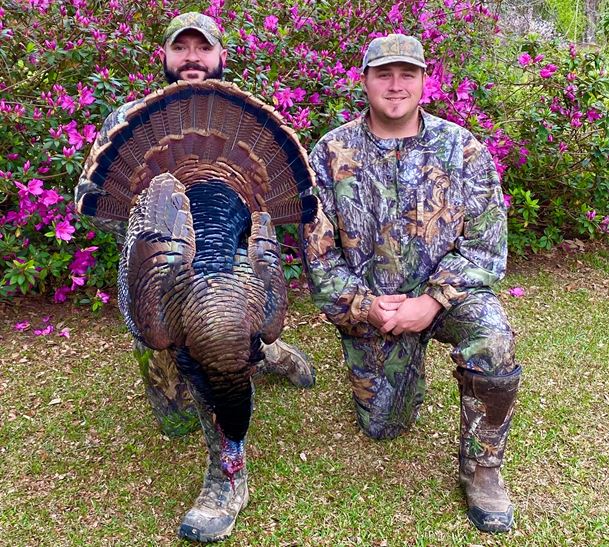
Wild turkeys can be just as challenging and difficult to bring to bag as white tail deer. Thus they offer the hunter a true challenge worthy of his skills.
Turkeys can be so wary that most stories on hunting them revolve around a totally concealed and camouflaged hunter using a call and sometimes decoys to lure them in. That certainly is a workable strategy and I am not here to argue with those that do it this way anymore than I would dispute the use of binoculars or wearing a blaze orange deer hunting vest to and from your stand so some other hunter doesn’t take a shot at you.
Most hunters construct a blind from which to ambush incoming birds. There are prefab blinds and you can also make them from army surplus camouflage netting. Of course, you can also cut foliage to construct a blind. The objective is to shield the hunter from the turkey’s sharp eyes while muffling some of the hunter’s sounds from the turkey’s incredibly good hearing. It is better to construct the blind well in advance of its use as turkeys are extremely aware ad wary of changes in the landscape and the presence of a new blind can scare them off.
Since turkeys are shot on the ground as opposed to wing shooting the full choke is highly preferred by most turkey hunters because they can get the full benefits of the tighter choke as they draw a careful bead.
Locating roosting trees is done by carefully monitoring the flock and following their calls as they roost for the night. Once the roosting tree is located you are able to locate your blind so as to ambush them coming and going. It is important that the turkeys do not see you as the sight of a man can make them change trees.
The adult Toms are larger than the immature Jakes and have a more prominent beard hanging down from their chest.
My experiences with wild turkeys in the North Georgia mountains just happen to be different from the norm.
To begin with, I have normally hunted them in either tan brush buster bird hunting clothes or my everyday clothes that I wear around the farm. I wear grey or green and never blue. white, red, or bright colors. I believe in camouflage but I never seem to have it on when turkeys are about.

Some hunters are adept with mouth calls but I have only used the Lynch World Champion Turkey Call Model Number 102F box call. I got a tape from the company with instructions on how to use it. If you are going to talk “turkey talk,” you better know what you are saying.
My wife, Betty soon took over the call saying if you want to sound like a female calling a man you had better let a female do the calling. Boy was she right. She called one Tom well within 10 feet of us. At the time we were wearing our everyday clothes and sitting only partially concealed at the edge of the woods overlooking a field frequented by turkeys. Not the ideal set up but it worked.
Turkeys are normally the most elusive and timid birds, but during deer season at Clark Hill Game Management Area I ran into one who had never read that. It was not turkey season when a big tom came straight at me in attack mode! The last thing I needed was an out-of-season bird in a game management area where the game wardens kept checking on the hunters but he was coming straight at me and male turkeys have really long spurs, often over 1¼ inches long, and they can do a lot of injury. I prepared to give him a butt stroke with my rifle but he turned off at the last minute. I have never heard of a similar experience.
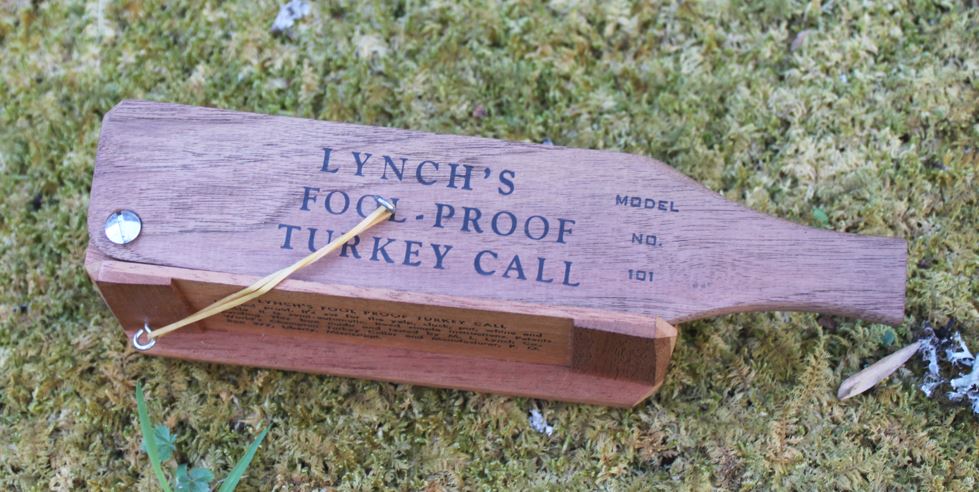
You never read of stalking turkeys but that is how I have shot most of mine. Ease through the woods and when you hear them moving about then stalk closer like a cat stalking a bird, taking advantage of any and all available cover until you are in range for a shot. I like to get as close as possible before shooting but I have taken some very long shots when I had to and done it successfully.
I use a Thomas Horsley side-by-side 12-gauge made in 1906 with the stock altered to fit me. It’s choked improved cylinder and full choke. I use one birdshot load exclusively: 1 ounce of # 6 shot over 3 drams of powder. This produces 1,290 FPS and delivers perfectly even patterns. If there is any recoil I have never felt it.
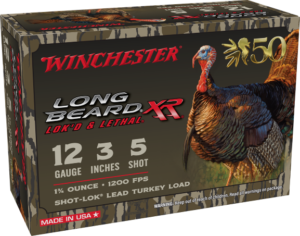
Back when the light single barrel shotgun was the most popular type sold in the U.S., this was the most popular load. It worked well on everything I hunted. It shoots through all the heavy feathers and breaks the biggest bones in a turkey at even the longest ranges.
Today, nearly every shotgun manufacturer produces one or more models specifically aimed at turkey hunting. They have various camouflage pattern finishes, come with “extra-full” turkey chokes and many, if not most, are designed to accept slings.
Some hunters will use a turkey call when trying to slip up on a big tom. They will go back and forth with the turkey calling and the hunter answering with his turkey call trying to take sight of the turkey. Just make sure you don’t forget to take stock of where you are during one of these chases as they can cover a lot of ground.
While some want to be out calling at dawn and dusk so they can catch the turkeys flying down off their roost or going back up to roost, in my experience turkeys are moving about and feeding all day long so anytime is a good time to hunt them.
Sometimes a turkey will hunker down and sit tight while you approach only to take flight at the last moment in the biggest thunder of wings you will ever hear.

